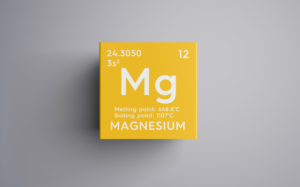
Exercise is often touted for its physical benefits, such as improved cardiovascular health and weight management. However, its impact on mental health and resilience is equally profound. Recent studies have uncovered fascinating insights into how exercise affects the brain, particularly in relation to stress, depression, and trauma recovery.
In this post, we look at the benefits of exercise including the hope molecule.
The Benefits of Exercise
Incorporating regular exercise into your routine can have a profound impact on your physical and mental well-being. Whether it’s a daily walk, a yoga class, or a gym session, finding activities you enjoy can make it easier to stick to a regular exercise routine and reap the many benefits it offers.

Improved Sleep
Regular physical activity can improve sleep quality and duration. Exercise helps regulate the body's internal clock (circadian rhythm) and can reduce symptoms of insomnia. However, it's important to avoid vigorous exercise close to bedtime, as it may interfere with sleep.

Increased Energy Levels
Engaging in regular exercise can boost your energy levels and reduce feelings of fatigue. This is because exercise improves blood flow and oxygen supply to the muscles, enhancing their efficiency and reducing feelings of tiredness.

Enhanced Self-Esteem
Exercise can improve self-esteem and self-confidence. Physical activity can help you feel better about your appearance and abilities, leading to a more positive self-image. Additionally, achieving fitness goals and milestones can boost self-confidence and provide a sense of accomplishment.

Weight Management
Exercise plays a crucial role in weight management by helping to burn calories and build muscle mass. Combining regular exercise with a balanced diet can help you maintain a healthy weight and reduce the risk of obesity-related conditions, such as heart disease and diabetes.

Improved Cognitive Function
Physical activity has been shown to improve cognitive function, including memory, attention, and problem-solving skills. Exercise stimulates the release of chemicals in the brain that promote the growth of new brain cells and improve brain function.

Stress Reduction
Exercise is a powerful stress reliever. Physical activity triggers the release of endorphins, chemicals in the brain that act as natural painkillers and mood elevators. Exercise also reduces levels of the body's stress hormones, such as cortisol, leading to a reduction in stress levels.

Social Benefits
Exercise can provide social benefits, especially when done in group settings or team sports. It can help you meet new people, build friendships, and create a sense of community, which is important for overall mental well-being.

Reduced Risk of Chronic Diseases
Regular exercise is associated with a reduced risk of developing chronic diseases, such as heart disease, stroke, type 2 diabetes, and certain types of cancer. Exercise helps improve cardiovascular health, maintain healthy blood pressure and cholesterol levels, and regulate blood sugar levels.
The Best Exercises for Weight Loss
When it comes to losing weight, incorporating regular exercise into your routine is essential. While any physical activity can help burn calories, some exercises are particularly effective for weight loss. Here are some of the best exercises to help you shed pounds:
- Cardiovascular Exercises: Cardiovascular or aerobic exercises are great for burning calories and improving cardiovascular health. Activities like running, jogging, cycling, swimming, and dancing can help you torch calories and lose weight.
- High-Intensity Interval Training (HIIT): HIIT workouts involve short bursts of intense exercise followed by brief rest periods. This type of training is highly effective for weight loss, as it can help you burn a significant number of calories in a short amount of time.
- Strength Training: While cardio is important for weight loss, strength training is also crucial. Building muscle can help boost your metabolism and burn more calories at rest. Incorporate exercises like squats, lunges, push-ups, and planks into your routine to build muscle and burn fat.
- Compound Exercises: Compound exercises work multiple muscle groups at once, making them efficient for burning calories and building strength. Examples include burpees, mountain climbers, and kettlebell swings.
- Interval Training: Interval training involves alternating between periods of high-intensity exercise and lower-intensity recovery periods. This type of workout can help you burn more calories and improve your fitness level.
- Circuit Training: Circuit training combines strength training and cardiovascular exercise in a single workout. It involves moving quickly between different exercises with minimal rest, which can help you burn more calories and improve your overall fitness.
- Walking: While it may seem simple, walking is a highly effective form of exercise for weight loss. Walking at a brisk pace can help you burn calories and improve your cardiovascular health. Aim for at least 30 minutes of brisk walking most days of the week.
- Swimming: Swimming is a low-impact exercise that can help you burn calories and improve your cardiovascular fitness. It’s also a great full-body workout, engaging muscles in your arms, legs, and core.
- Cycling: Whether you’re cycling outdoors or using a stationary bike, cycling is a fantastic way to burn calories and improve your cardiovascular health. It’s also easy on the joints, making it suitable for people of all fitness levels.
- Dancing: Dancing is not only fun but also a great way to burn calories and improve your fitness. Whether you prefer Zumba, salsa, or hip-hop, dancing can help you lose weight while having a blast.
Incorporating a variety of these exercises into your routine can help you maximize weight loss and achieve your fitness goals. Remember to consult with a healthcare professional before starting a new exercise program, especially if you have any underlying health conditions.
Hope Molecules: The Key to Stress Resistance
When you exercise, your muscles produce and release a unique set of proteins called myokines. Among these myokines are “hope molecules,” scientifically known as brain-derived neurotrophic factor (BDNF) and irisin. These molecules play a crucial role in protecting the brain from stress and depression.
BDNF, often referred to as “Miracle-Gro for the brain,” promotes the growth and formation of new neurons and strengthens existing ones. It also helps regulate mood, making you more resilient to stress and less susceptible to depression. Studies have shown that regular exercise increases BDNF levels in the brain, leading to improved mental health and cognitive function.
Irisin, another myokine, has been found to have antidepressant effects. It helps convert white fat cells into brown fat cells, which burn energy and generate heat. This process, known as browning, not only aids in weight management but also produces molecules that support brain health and resilience.
References
Here are some general references and keywords for further research on hope molecules, BDNF, irisin, and their role in brain function and mental health:
Brain-Derived Neurotrophic Factor (BDNF):
- Binder, Devin K., and Hannah C. Scharfman. “Brain-derived neurotrophic factor.” Growth Factors 22.3 (2004): 123-131.
- Cotman, Carl W., and Nicole C. Berchtold. “Exercise: a behavioral intervention to enhance brain health and plasticity.” Trends in neurosciences 25.6 (2002): 295-301.
Irisin:
- Wrann, Christiane D., et al. “Exercise induces hippocampal BDNF through a PGC-1α/FNDC5 pathway.” Cell metabolism 18.5 (2013): 649-659.
- Zhang, Yong, et al. “Irisin stimulates browning of white adipocytes through mitogen-activated protein kinase p38 MAP kinase and ERK MAP kinase signaling.” Diabetes 63.2 (2014): 514-525.
Role in Mental Health:
- Molendijk, Marc L., et al. “Serum BDNF concentrations as peripheral manifestations of depression: evidence from a systematic review and meta-analyses on 179 associations (N= 9484).” Molecular psychiatry 19.7 (2014): 791-800.
- Rasmussen, Peter, et al. “Effects of exercise on gene-expression profile in the rat hippocampus.” Neurobiology of disease 29.1 (2008): 54-61.
These references should provide a starting point for further exploration of the topic.
Exercise and Longevity: How Exercise Can Extend Your Lifespan
Numerous studies have demonstrated a strong link between regular exercise and increased longevity. These studies show that individuals who engage in regular physical activity are less likely to develop chronic illnesses and have a lower risk of premature death compared to sedentary individuals.
One study, published in the British Journal of Sports Medicine, followed over 80,000 adults for more than a decade and found that those who engaged in moderate to high levels of physical activity had a 29% lower risk of all-cause mortality compared to those who were inactive. The study also found that each additional 15 minutes of moderate-intensity exercise per day was associated with a 4% lower risk of death.
Another study, published in the Journal of the American College of Cardiology, examined the association between exercise and cardiovascular disease (CVD) risk. The study found that individuals who engaged in regular physical activity had a significantly lower risk of developing CVD compared to those who were inactive. Specifically, the study found that each additional hour of exercise per week was associated with a 7% lower risk of CVD.
Furthermore, research has shown that exercise can help reduce the risk of developing other chronic illnesses, such as type 2 diabetes, cancer, and stroke. A study published in the journal Diabetologia found that individuals who engaged in regular physical activity had a 28% lower risk of developing type 2 diabetes compared to those who were inactive. Similarly, a study published in the journal Cancer Epidemiology, Biomarkers & Prevention found that regular exercise was associated with a reduced risk of developing certain types of cancer, including breast, colon, and lung cancer.
In addition to reducing the risk of chronic illnesses, exercise has been shown to improve overall quality of life and mental well-being, factors that can contribute to longevity. A study published in the journal PLOS One found that individuals who engaged in regular physical activity reported higher levels of life satisfaction and happiness compared to those who were inactive.
The scientific evidence strongly supports the notion that regular exercise is associated with increased longevity. By incorporating physical activity into your daily routine, you can not only improve your physical health but also reduce your risk of developing chronic illnesses and live a longer, healthier life.
The Importance of Recovery
While exercise is crucial for achieving your fitness goals, recovery is equally important. Giving your body time to rest and recover is essential for maximizing the benefits of your workouts and preventing injury. Here’s why recovery should be an integral part of your fitness routine:
Muscle Repair and Growth
When you exercise, especially strength training, you create microscopic tears in your muscle fibers. During rest, your body repairs these tears, leading to muscle growth and strength gains. Without adequate rest, your muscles may not have time to repair properly, leading to decreased performance and increased risk of injury.
Prevention of Overtraining
Overtraining occurs when you push your body too hard without giving it enough time to recover. This can lead to fatigue, decreased performance, and an increased risk of injury. Incorporating rest days into your routine can help prevent overtraining and keep you feeling fresh and motivated.
Improved Performance
Rest and recovery are essential for optimizing performance. When you allow your body to rest, you give your muscles time to replenish glycogen stores and repair damaged tissues. This can lead to improved strength, endurance, and overall performance.
Injury Prevention
Rest and recovery play a crucial role in injury prevention. When you overtrain or don’t allow your body enough time to recover, you increase the risk of muscle strains, joint pain, and other injuries. By incorporating rest days and listening to your body, you can reduce the likelihood of injury.
Mental Health
Rest and recovery are not just important for your physical health but also for your mental well-being. Exercise can be stressful on the body, and taking time to rest can help reduce stress levels and improve your overall mental health. Additionally, getting enough rest can help prevent burnout and keep you motivated to stick to your fitness routine.
Incorporating rest and recovery into your fitness routine is essential for achieving your fitness goals safely and effectively. Listen to your body and give yourself permission to rest when needed. Remember, rest is not a sign of weakness but rather a vital component of a balanced and sustainable fitness program.
Exercise and Trauma Recovery
Exercise has also shown promise in aiding recovery from trauma, both physical and psychological. The release of hope molecules, along with other biochemical changes triggered by exercise, can help mitigate the effects of trauma on the brain and body.
For example, studies have found that exercise can reduce the risk of developing post-traumatic stress disorder (PTSD) after a traumatic event. It does this by promoting the growth of new neurons in the hippocampus, a brain region involved in memory and emotion regulation. Exercise also helps restore the balance of neurotransmitters in the brain, such as serotonin and dopamine, which play a crucial role in mood regulation and resilience.

Practical Tips for Harnessing the Benefits of Exercise
To reap the mental health benefits of exercise, aim for a combination of aerobic and strength-training exercises. Aerobic exercises, such as running, swimming, or cycling, help increase BDNF levels and improve overall brain health. Strength-training exercises, like weightlifting or bodyweight exercises, can stimulate the release of irisin and promote the browning of fat cells.
Consistency is key. Aim for at least 150 minutes of moderate-intensity exercise per week, spread out over several days. Find activities that you enjoy and can easily incorporate into your daily routine. Whether it’s a brisk walk in the park, a yoga class, or a dance session in your living room, any form of physical activity can have a positive impact on your mental health and resilience.
The Impact of Exercise: Three Case Studies
Physical activity and mental health in children and adolescents
The study, conducted by Biddle and Asare and published in the Journal of Clinical Psychology in 2013, aimed to examine the relationship between physical activity and mental health in children and adolescents. The researchers conducted a review of existing literature, synthesizing the findings from multiple studies to provide a comprehensive overview of the topic.
The review found consistent evidence that physical activity is associated with improved mental health outcomes in children and adolescents. Specifically, regular physical activity was linked to reduced symptoms of depression and anxiety. The researchers also noted that physical activity had a positive impact on mood and self-esteem, further contributing to overall mental well-being.
The findings of this study have significant implications for promoting mental health in young people. Encouraging children and adolescents to engage in regular physical activity could potentially help reduce the risk of developing mental health disorders such as depression and anxiety. Schools, communities, and families can play a crucial role in promoting physical activity among young people to support their mental health.
Source: Biddle, S. J., Asare, M. (2013). Physical activity and mental health in children and adolescents: A review of reviews. Journal of Clinical Psychology, 34(9), 748-760.
Exercise for the treatment of depression and anxiety
A meta-analysis conducted by Rebar et al. and published in the Journal of Clinical Psychiatry in 2018 examined the effects of exercise on depression and anxiety in adults. The researchers conducted a comprehensive review of existing studies to assess the impact of exercise on these mental health conditions in non-clinical adult populations.
The meta-analysis revealed that exercise had a significant positive effect on reducing symptoms of depression and anxiety in adults. The researchers found that individuals who engaged in regular exercise experienced a significant reduction in symptoms, with the greatest benefits observed in those with more severe symptoms. The analysis also highlighted the importance of the frequency and intensity of exercise, suggesting that higher levels of physical activity were associated with greater improvements in mental health outcomes.
The findings of this meta-analysis have important implications for the treatment of depression and anxiety in adults. Exercise can be a cost-effective and accessible intervention that can complement traditional therapies for these mental health conditions. Incorporating regular exercise into treatment plans for depression and anxiety may lead to improved outcomes and overall well-being for individuals experiencing these disorders.
Source: Rebar, A. L., Stanton, R., Geard, D., Short, C., Duncan, M. J., Vandelanotte, C. (2015). A meta-meta-analysis of the effect of physical activity on depression and anxiety in non-clinical adult populations. Health Psychology Review, 9(3), 366-378.
Physical activity and cardiovascular health
A large cohort study published by Arem et al. in the New England Journal of Medicine in 2018 investigated the relationship between leisure-time physical activity and longevity. The study aimed to determine the association between different levels of physical activity and the risk of mortality from all causes, including cardiovascular disease, in a large population of adults.
The cohort study found that individuals who engaged in leisure-time physical activity had significantly lower risks of mortality from all causes compared to those who were inactive. Specifically, the researchers observed a dose-response relationship, with higher levels of physical activity associated with greater reductions in mortality risk. The study also found that the benefits of physical activity were particularly pronounced for reducing the risk of mortality from cardiovascular disease, highlighting the importance of regular physical activity for cardiovascular health.
The findings of this study have important implications for public health and the promotion of physical activity. Encouraging individuals to engage in leisure-time physical activity, even at moderate levels, can have significant benefits for longevity and cardiovascular health. The study underscores the importance of regular physical activity as a key component of a healthy lifestyle and emphasizes the role of physical activity in reducing the risk of premature death.
Source: Arem, H., Moore, S. C., Patel, A., Hartge, P., De Gonzalez, A. B., Visvanathan, K., … & Matthews, C. E. (2015). Leisure time physical activity and mortality: A detailed pooled analysis of the dose-response relationship. Journal of the American Medical Association Internal Medicine, 175(6), 959-967.

The Power of Movement for Mind and Body
The evidence is clear: exercise is a powerful tool for improving both physical and mental health. Studies have shown that physical activity can reduce symptoms of depression and anxiety, protect against cardiovascular disease, and even enhance longevity. The release of “hope molecules” like BDNF and irisin during exercise plays a crucial role in these benefits, promoting brain health and resilience.
Moreover, exercise offers a host of additional benefits, including improved sleep, increased energy levels, and enhanced self-esteem. These findings underscore the importance of regular physical activity for overall well-being. By incorporating exercise into our daily routines, we can not only improve our physical health but also boost our mental health and quality of life.
In light of this evidence, it is clear that promoting physical activity should be a priority for individuals, healthcare professionals, and policymakers alike. By encouraging everyone to move more, we can create healthier, happier communities and reduce the burden of mental health disorders and chronic diseases. So let’s lace up our shoes, hit the trials, and experience the transformative power of movement for ourselves.




